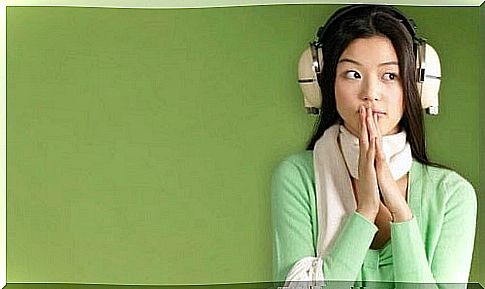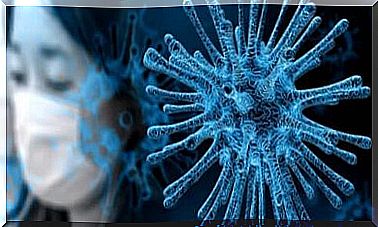Misophonia: The Aversion To Certain Sounds

We tell you a story here so you can learn more about misophonia and all that it entails.
What you just read is the real story of a person with misophonia. What exactly is misophonia? Misophonia is defined as a great sensitivity (hypersensitivity) to a certain type of sound or sounds.
In addition to hyperacusis and phonophobia, there is a low tolerance for sound. People with misophonia tend to experience a physical response to certain sound stimuli. Doctors Pawel Jastreboff and Margaret Jastreboff coined the word “misophonia” in 2000. The term comes from the Greek word ‘ misos’ , which means aversion, and from ‘ foné’, which means sound. You can therefore describe misophonia as a ‘selective sensitivity to sound’.

What exactly is misophonia?
We’ve already mentioned it. Misophonia is a decline in a person’s tolerance to certain sounds. People with this condition cannot tolerate certain specific sounds. What to most people are just background noises are thoroughly annoying noises to others.
Noises such as chewing, the rattling of materials, or the tapping of fingers on a desk are unbearable for people with misophonia. The frequency of some of the sounds that cause this discomfort is fairly low, around 40 to 50 decibels.
This hostility to sounds is even worse when the people making them are close to the person with misophonia. Meredith Rosol, a Baltimore elementary school teacher, was diagnosed with misophonia. She says she can no longer eat with her parents. Only if she wears earplugs can she share a meal with them.
These people also face the problem that the diagnosis is difficult to establish. This means that it is also difficult to treat it properly. In fact, it has only recently been classified as a disease.
Is misophonia a psychological disorder?
Some people argue that misophonia is not a psychological disorder. They say it is not a phobia. It is then treated as a neurological disorder. It is likely that the neurological disorder is located in certain structures of the central nervous system.
It is still not known exactly where the “visceral” reaction comes from. It may have something to do with damage to the medial prefrontal cortex. This is similar to what happens with another medical condition called tinnitus. Tinnitus is a ringing in the ears or another type of phantom sound in the ear. It usually comes from damage to the hair cells in the cochlea (or cochlea: a spiral part of the inner ear that provides sound perception).

The Symptoms of Misophonia
People with misophonia feel discomfort, anger, rage, panic, fear… They can even imagine that the person making the sounds is attacking. It can then be about normal and ordinary sounds that people make when they eat, drink, sip, breathe, cough, and so on.
These people also feel uncomfortable with other repetitive sounds: nibbling gum, blowing bubbles, cracking bones, and so on. When they hear these sounds, they display anxiety and avoidance behaviors. In severe cases, individuals can become so intolerant that they behave aggressively towards the objects, people or animals involved.
Sometimes people with misophonia develop a real obsession with these sounds. The hypersensitivity then expands. An intolerance can then develop for the people or the situations that cause these noises.
Psychological Problems That Misophonia Can Lead To
People with misophonia can develop serious psychological problems. They may become aggressive or make the decision to avoid all situations related to their problem. In this way they isolate themselves and feel a deep sense of loneliness.
The tools available to treat their ailments are lacking. Social reintegration is therefore not easy. So they take refuge in wearing earplugs or headphones. Still, they cannot solve the underlying problem.
How common is this condition?
The exact frequency of misophonia is unknown. People who have it claim that it occurs more often than what is officially acknowledged. Hearing problems are more common than you might think. Often there is a treatment but in other cases it is much more difficult to treat. This is especially true when the problem is a hypersensitivity to certain sounds. This is because there is an interaction between physical and psychological factors.

The treatment of misophonia
There is no known cure for misophonia. Some patients have found cognitive behavioral therapy to be helpful, as has exercise therapy for tinnitus. Others have found that these techniques are not as effective. Many doctors are still unaware that this disorder exists. In many cases they will not diagnose this condition.
Certain psychological treatments and hypnosis have been effective in some patients. In general, however, there is no definitive cure for this condition. While waiting for more appropriate treatment, patients must continue to live in a state of fear or isolation.









